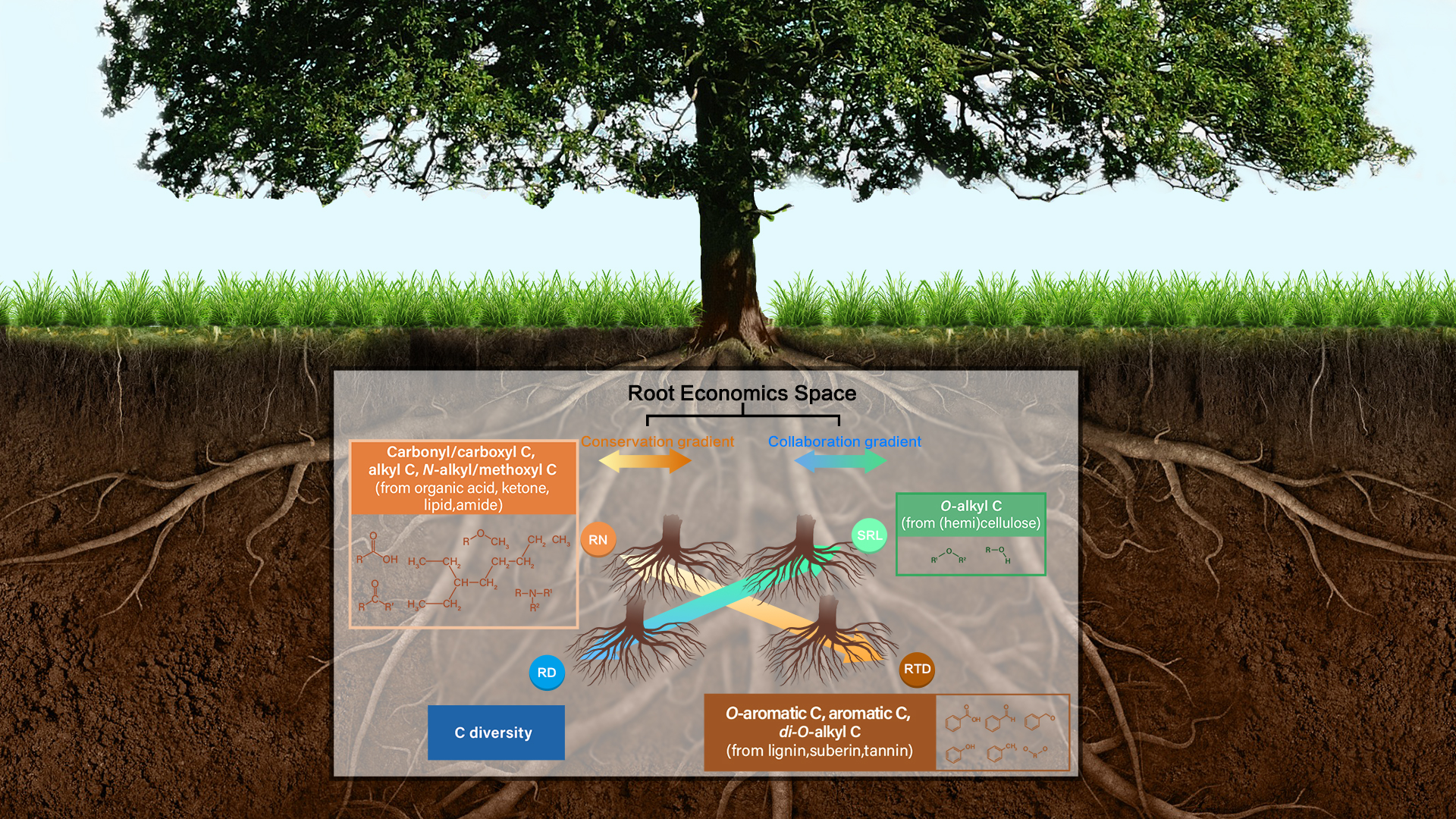Carbon, a fundamental constituent of terrestrial life, has long captivated attention due to its pivotal role. While previous focus centered on the total carbon content in plant tissues, scant attention was paid to the composition, abundance, and diversity of specific carbon compounds, referred to as molecular-level carbon traits. These traits, including their ecological and evolutionary significance, particularly in the context of the soil’s concealed domain—the fine roots—remained obscure.

A recent paper by Associate Professor Junjian Wang’s research group from the School of Environmental Science and Engineering at the Southern University of Science and Technology (SUSTech), in collaboration with Professor Deliang Kong’s group from Henan Agricultural University, sheds light on the potential influence of these molecular-level carbon traits on shaping the multidimensional economics space of fine roots.
Collecting fine-root samples from 66 tropical tree species, they employed 13C NMR analysis to quantify the relative abundance of functional groups derived from various carbon compounds. This endeavor established a correlation between these molecular-level carbon traits and commonly measured functional traits of fine roots. Subsequently, the researchers compared and scrutinized their findings with global-scale trait datasets to ascertain the universality of the observed patterns.
Their work, entitled “Molecular-level carbon traits underlie the multidimensional fine root economics space”, has been recently published in the journal Nature Plants.
This study pioneers the identification of two primary dimensions of variation in molecular-level carbon traits, closely intertwined with the widely recognized multidimensional fine root economics space. Given the diverse physiological and ecological functions associated with different carbon compounds, molecular-level carbon traits offer deeper insights into the functionality, diversity, and environmental adaptation of fine roots compared to mere total carbon content.
For instance, plant species with thinner fine roots tend to invest more in O-alkyl carbon to facilitate the “do-it-yourself” soil exploration. Differently, plant species bearing denser fine roots invest more in aromatics and less in nitrogenous or carbonyl-containing compounds, which indicates a slower metabolism and higher defense of the roots.

Figure 1. Conceptual framework of the two-dimensional root functional trait space
Additionally, the study unveils a robust correlation between key carbon traits of fine roots, both within the present investigation and across global datasets, and commonly measured functional traits of fine roots. Noteworthy correlations include a positive association between lignin content and root tissue density, and a negative correlation between cellulose and hemicellulose content and root diameter. Therefore, the coupling between molecular-level carbon traits and root economics space may be universal.
These findings illuminate the significant role of molecular-level carbon traits in shaping the fine root economics space. Besides offering novel molecular-level insights into understanding the diversity of plant root morphology and function, it holds profound implications for elucidating plant evolution, species coexistence, and adaptability to heterogeneous environments.
Dr. Mengke Wang from the School of Environmental Science and Engineering at SUSTech is the first author of the paper. Associate Professor Junjian Wang from the School of Environmental Science and Engineering at SUSTech and Professor Deliang Kong from Henan Agricultural University are the co-corresponding authors.
The study was supported by the National Natural Science Foundation of China and the Guangdong Basic and Applied Basic Research Foundation.
Paper link: https://doi.org/10.1038/s41477-024-01700-4
To read all stories about SUSTech science, subscribe to the monthly SUSTech Newsletter.
Proofread ByAdrian Cremin, Yingying XIA
Photo BySchool of Environmental Science and Engineering